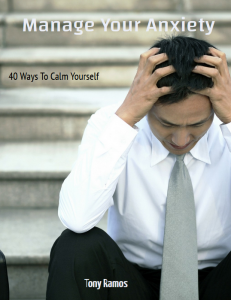
What does being mindful really mean?
“Be mindful” seems to be a popular affirmation these days. We have said it in this column many times, but what does it really mean, and how can we be mindful? I will use the term in a phrase with two similar words, and then compare it with the opposite to see if that helps. “I am mindful, I am aware, I am present.” The opposite: “I am mindless, I am unaware, I am absent.” Which of these phrases would you rather have describe you?
For the purpose of simplicity, I will say being mindful means being aware — aware of ourselves, our environments and our emotions while using all our senses.
One simple exercise of mindfulness is called the mind/body scan, where we check in on the different parts of our body. We check for any tension, discomfort or stiffness and see if we can release it by relaxing and being aware. Start by taking a few slow deep breaths, close your eyes and, starting at your feet, work your way up until you reach your head. Then take another deep breath to end this session. You can also start at your head and work down.
People are also reading…
Let’s imagine you are preparing a stew for dinner. Your ingredients probably include vegetables, spices, water and meat or a meat substitute. A mindful, respectful eater would appreciate the path these ingredients took to reach your kitchen. The farmer who planted the seeds (and that would require earth, rain and sunlight), the workers who picked the crops, the truckers who brought them to the store, the store workers and you. Gratitude is an important element of mindfulness.
Joe Sarnicola
Another critical component of mindfulness is our breath. If we stop breathing, we die. Taking a few deep-breathing breaks every day helps us to calm down and relax and appreciate the miracle of life, which comes from our breath. If (when) we become distracted during times of mindfulness or meditation, and I guarantee it will happen, once we are aware we are distracted, if we focus back on our breath, that will also bring us back to a state of mindfulness. It is a discipline that takes practice, but it is well worth the physical, mental and spiritual benefits it provides.
Empowered living thoughts
Practicing mindfulness is well worth the effort that we put into it and can be easy to implement in our lives. Joe has already given us three excellent exercises to try: the mind/body scan, gratitude expression and breath awareness. We can utilize these as daily mindfulness check-ins, taking a few minutes for each exercise throughout the day.
Another option is to choose a traditionally mundane activity like driving to work or walking the dog, and trying to experience it through the lens of mindfulness. Allow yourself to be fully immersed in the sensory details and try to approach it with the curiosity of a new experience, challenging yourself to notice new things about a seemingly routine task.
How much do we take for granted in our daily lives because we experience it so frequently that it loses its potency? As we bring more mindfulness to our lives, we will begin to revitalize some of the wonder and awe that has dulled throughout our years of gathering life experience. Life is not meant to merely be survived, but also to allow us to thrive and fully enjoy each moment as it is happening.
Part of what makes our lives so rich is our relationships with others, so it is also necessary to practice mindfulness while communicating. If we allow the mind to wander when it is our turn to listen, we could potentially misunderstand the speaker or give them the impression that we are not interested in their thoughts.

Mary Pasqua Waldron
We can train our minds to listen more actively by gently redirecting them back to the speaker whenever stray thoughts present themselves. When it is our turn to speak we can practice self-awareness, choosing our words deliberately so we are clear and concise while conveying compassion and kindness. Mindfulness in communication allows all parties to feel heard and understood, key components to a successful exchange of thoughts.
Practicing mindfulness is a beautiful, unfolding process. As we let go of our need to control and surrender ourselves to being fully present in each moment, we begin to flow with the current of life instead of struggling to swim upstream.
Joe Sarnicola, of Auburn, is a certified spiritual life coach and meditation leader. He can be reached at joesarnicola@yahoo.com or (315) 224-5071. Mary Pasqua Waldron is a certified yoga teacher, reiki practitioner and producer/presenter of the “Empowered Living” podcast.
Be the first to know
Get local news delivered to your inbox!







